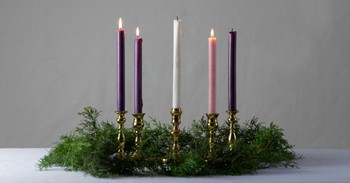Miriam is the sister of Moses, the oldest in her family, she exhibits responsibility, faith, and conviction throughout her story told in Exodus and Numbers. Her role in the salvation of her brother Moses, her leadership among the women of Israel, and her prophetic gifts mark her as one of the early and influential female figures in the Bible.
What Does the Name Miriam Mean?
The most prominent interpretation of "Miriam" is that it means "bitter," deriving from the Hebrew root "מר" (mar), which signifies bitterness or rebellion.
Born into the harsh reality of Israelite oppression in Egypt, her name encapsulates the collective bitterness experienced by her people under the yoke of slavery. It is a testament to the spirit of resistance and resilience that characterized their longing for freedom.
The dual meaning of her name, intertwining bitterness with the notion of rebellion, also hints at Miriam's own role as a figure of defiance and leadership. As the sister of Moses, Miriam not only witnessed but actively participated in the pivotal moments of Israelite resistance against Egyptian tyranny. Through this lens, Miriam's name becomes a symbol of the strength and perseverance required to challenge injustice.
Miriam's Story in the Bible
Miriam first appears in Exodus 2:1-10 as the watchful protector of her baby brother, Moses, when he is set adrift in the Nile in a basket to escape Pharaoh's decree to kill all Hebrew male infants. Her vigilance and quick thinking lead her to approach Pharaoh's daughter, who discovers the baby. Miriam suggests that a Hebrew woman, their own mother Jochebed, nurse him, thereby ensuring Moses' survival and upbringing within the Egyptian royal household.
As Moses grows to embrace his destiny, leading his people out of bondage, Miriam's presence remains influential. She is recognized as a prophetess in Exodus 15:20, the first woman to be accorded such a title in Scripture. Following the miraculous crossing of the Red Sea, Miriam leads the women of Israel in a triumphant dance and song, celebrating their escape from the Egyptians, as described in Exodus 15:20-21. This moment, known as Miriam's Song, is brief but powerful, underscoring her role in spiritual leadership and communal celebration.
Miriam's influence continues throughout the Israelites' journey. In the Book of Numbers, she, along with her brother Aaron, challenges Moses' unique position as God's spokesman. They critique Moses' Cushite wife and question, "Has the Lord indeed spoken only through Moses? Has he not spoken through us also?" (Numbers 12:1-2). This act of dissent provokes God's anger, resulting in Miriam being struck with leprosy as punishment (Numbers 12:9-10). Moses, ever the intercessor, pleads with God to heal her (Numbers 12:13). After seven days outside the camp, as required by law, Miriam is healed and reinstated in the community (Numbers 12:14-15).
Miriam's death is recorded in the wilderness of Zin in Numbers 20:1, marking the end of an era for the Israelite community. Her passing is noted with a brief mention, yet her impact on the narrative of the Exodus and the formation of the Israelite identity is profound. As a leader, prophetess, and musician, Miriam embodies the strength and complexity of women in Scripture. Her story reflects not only her pivotal role in Moses' early life and the Exodus but also the challenges and consequences of leadership.
Miriam's Song
Miriam's song took place right after the Israelites crossed the Red Sea. In the Book of Exodus, chapter 15, verses 20-21, Miriam, the prophetess and sister of Aaron, led the women in song and dance, celebrating the miraculous defeat of the Egyptian army by the parting of the Red Sea. This event followed immediately after Moses and the Israelites sang the longer "Song of the Sea," praising God for their deliverance.
Then Miriam the prophet, Aaron’s sister, took a timbrel in her hand, and all the women followed her, with timbrels and dancing.
Miriam sang to them:
“Sing to the Lord, for he is highly exalted.
Both horse and driver
he has hurled into the sea.” (Exodus 15:20-21).
While Miriam's song is short, just a few lines echoing the themes of the longer "Song of the Sea", it packs a punch. It celebrates God's role in defeating the enemies of the Israelites and stands as a powerful affirmation of faith. In Jewish tradition, Miriam's Song is a big deal. It highlights how important women are in spiritual leadership and communal celebrations. This moment is special because it's one of the first times we see a woman's voice leading a worship ritual, setting a precedent for female spiritual authority in Christianity. It’s a beautiful reminder of the significant and influential role women have always played in religious history.
Miriam’s Significance in the Bible
1. God Can Use Even the Youngest of Us
The first thing I see us learning here is a lesson from Miriam’s early days in life — that God can take any life and use it for His divine and ultimate plan.
We see that Miriam is a young girl, around seven years of age, when her mother sets her the task of looking out for her brother in the bullrushes of the Nile.
And yet, with bravery and courage, she stands and watches over him. We have no idea how long she waited, but for a small child to hold that level of focus and not run off finding a buzzing bee or a feather blowing in the wind is worth noting.
God used Miriam here to ensure the safety of Moses. Moses was to be a man of mission and purpose, and these moments standing by the Nile may seem insignificant to some, but they mattered enough to God that He placed her name and the purpose into Scripture for a reason.
God can use you no matter what age you are. But sometimes, your purpose is to protect God’s anointed.
2. Miriam Recognized God’s Hand in Her Life
Exodus 15 tells us of the moment when the Egyptians were killed and the Israelites were saved.
It is a surprising turn of events in the narrative of the Israelite story, and yet we see Miriam instantly thanking God for saving them, going as far as to lead the women of the group in praise and adoration to God thanking Him.
I wonder, do we see God’s hand in our lives and recognize his active involvement? But more importantly, do we return with praise and thanksgiving?
Friend, it is not just the life-saving moments that we need to be thankful for but for the seemingly small things like food on our plates, families who love us, churches that champion us, nature that shows the Glory of God, and salvation that enables us to know God!
All of these are important things to thank God for.
3. Critical and Judgmental Hearts Are Deadly Diseases for the Soul
In the middle of the Book of Numbers, we see Miriam starting to get judgmental of Moses’ marriage.
Of course, Scripture tells the Israelites that they are not to marry outside of the fold of the Israelite clan, but, friend, it is not Miriam’s place to level blame or judgment on the feet of Moses.
But this level of judgment led to them trying to bring Moses down and elevate themselves, and so God inflicted her with Leprosy. Eventually, we read in Numbers 20 that she died.
Oh, friend, I never want to be someone who lets criticism and judgment take root in my heart, and I urge you to do as I do, investigate your soul, and uproot anything of similar nature that lies there; dare we end up with spiritual death as a result.
I hope by reading about Miriam’s life, we have learned something of interest and some challenges to edify ourselves.
For further reading:
How the Women in the Bible Were Revered, Respected, and Diverse
Photo Credit: ©iStock/Getty Images Plus/andreswd




.jpg)
.jpg)